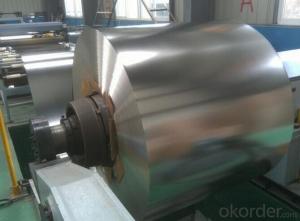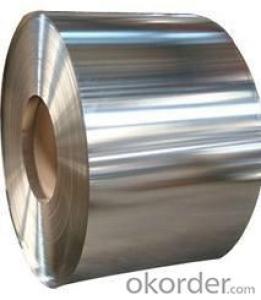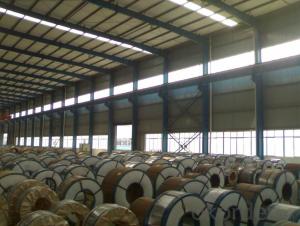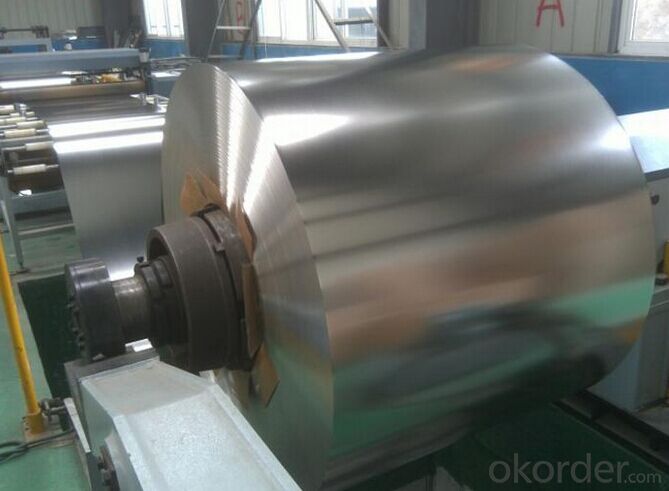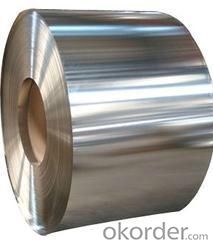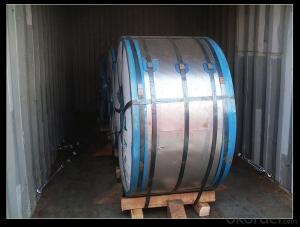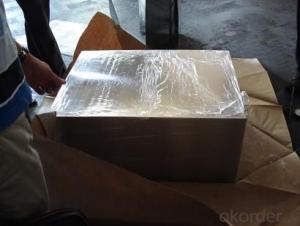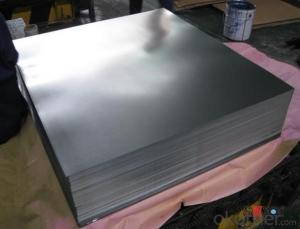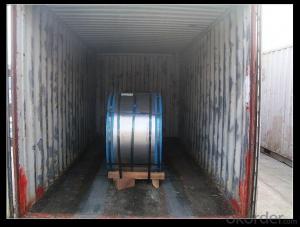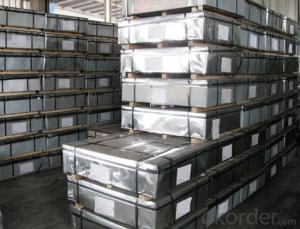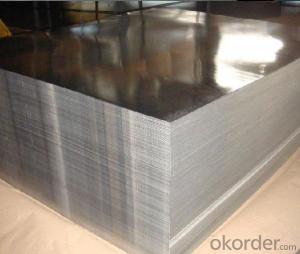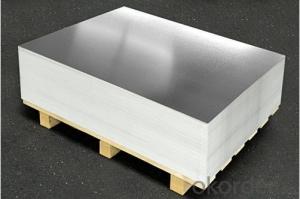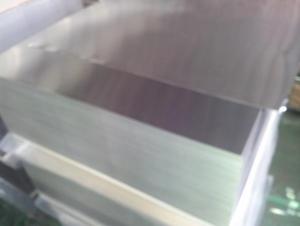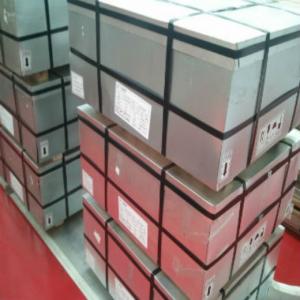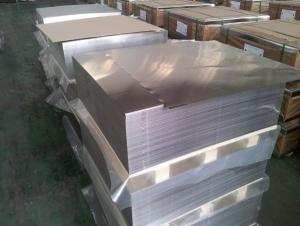Tinplate Coil / Sheet for Foods Packaging
- Loading Port:
- Tianjin
- Payment Terms:
- TT or LC
- Min Order Qty:
- 25 m.t
- Supply Capability:
- 7000 m.t/month
OKorder Service Pledge
OKorder Financial Service
You Might Also Like
1.Structure of Electrolytic Tin Plate Coils and Sheets for Foods Metal Packaging Description
Electrolytic Tinplate (ETP) is a thin, cold-rolled carbon steel sheet coated with tin. The steel substrate provides the necessary strength and formability for specialty fabrication. The alloy layer provides the bond between the steel and free tin layer. The free tin layer is not only responsible for the attractive bright finish and ease of solderability but is also non-toxic, a factor of vital importance in food packaging.
Tinplate’s corrosion resistance, light weight and malleability make it ideal for many precision end uses, including food packaging and consumer products. The special properties of tinplate and improved manufacturing technology is allowing for the utilization of tinplate in many new end products.
2.Main Features of the Electrolytic Tin Plate Coils and Sheets for Foods Metal Packaging
Tinplate is also widely used for making all types of containers such as food cans, beverage cans, and artistic cans, tea cans, painting cans, chemical package cans and dry food package cans, metal printing etc. Its applications are not limited to containers; recently, electrolytic tinplate has also been used for making electrical machinery parts and many other products.
3.Electrolytic Tin Plate Coils and Sheets for Foods Metal Packaging Images
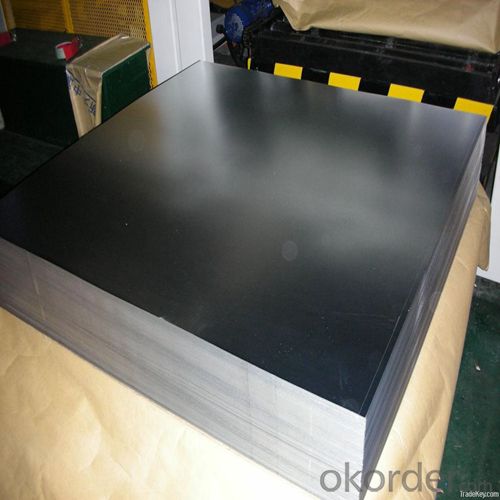
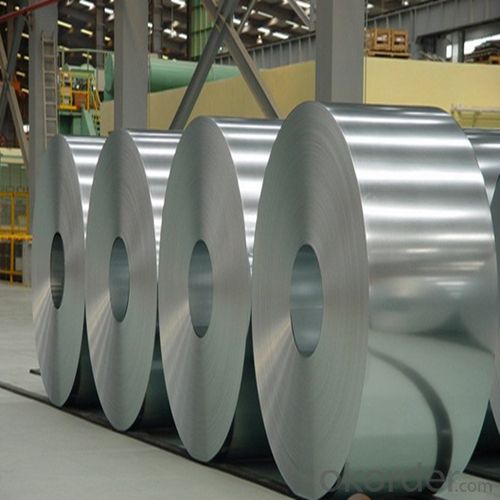
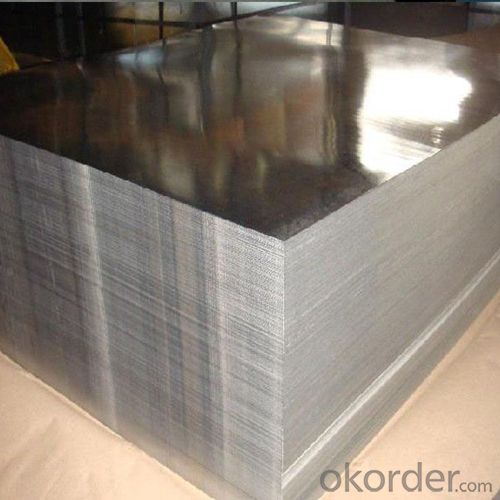
4.Electrolytic Tin Plate Coils and Sheets for Foods Metal Packaging Specification
Standard | ISO 11949 -1995, GB/T2520-2000,JIS G3303,ASTM A623, BS EN 10202
|
Material | MR,SPCC |
Thickness | 0.15mm - 0.50mm |
Width | 600mm -1150mm |
Temper | T1-T5 |
Annealing | BA & CA |
Coil Inner Diameter | 508mm |
Weight | 6-10 tons/coil 1~1.7 tons/sheets bundle |
Passivation | 311 |
Oil | DOS |
Surface | Finish,bright,stone,matte,silver |
5.FAQ of Electrolytic Tin Plate Coils and Sheets for Foods Metal Packaging
- How are the Electrolytic Tin Plates specified?
The Electrolytic Tin Plates are specified as per the steel base, extent of tempering, the coating weight, annealing method and the surface finish.
- How many types there are for base steels?
The base steels are of three types: Type MR, L, D
-What your tinplate material is used for ?
Tinplate is widely used for the packaging of products. Such as food cans,
beverage cans, pet cans, closures, general line cans and so on.
Printed Tinplate is offered!!
-How to place .an order or contact you ?
Please send us Email. we will give you a quick response in seconds .
- How is your quality ?
All our quality is prime even the secondary quality . We have many years experience
In this field with serious quality control standard . Advanced equipment, We welcome your visit to our factory .
- Q: How does tinplate packaging contribute to product differentiation?
- Tinplate packaging contributes to product differentiation by providing a unique and distinctive look to the product. The shiny and attractive appearance of tinplate packaging sets it apart from other packaging materials, catching the attention of consumers and creating a memorable impression. Additionally, tinplate packaging can be customized with various designs, colors, and patterns, allowing brands to showcase their uniqueness and stand out in the market. Overall, tinplate packaging helps products to differentiate themselves from competitors and create a strong brand identity.
- Q: How does tinplate contribute to sustainability efforts?
- Tinplate contributes to sustainability efforts in several ways. Firstly, it is a highly recyclable material, which means that it can be reused multiple times without losing its properties. This helps reduce the demand for new raw materials and minimizes waste generation. Additionally, tinplate is often used as packaging material for food and beverages, providing a protective and durable barrier that extends the shelf life of products, reducing food waste. Furthermore, tinplate cans are lightweight, making them more energy-efficient during transportation, thus reducing carbon emissions. Overall, tinplate's recyclability, protective properties, and energy efficiency make it a sustainable choice for various industries.
- Q: How is tinplate coated for corrosion resistance?
- Tinplate is coated for corrosion resistance through a process called electrolytic tinning. In this process, a thin layer of tin is deposited onto the surface of the tinplate using an electric current. This tin coating acts as a protective barrier, preventing the underlying steel from coming into direct contact with oxygen and moisture, which are the main causes of corrosion.
- Q: What are the main components of tinplate?
- The main components of tinplate are steel and tin.
- Q: How does tinplate compare to other packaging materials in terms of brand recognition?
- Tinplate is a highly recognizable packaging material that offers excellent brand recognition. Its shiny and durable surface stands out on the shelves, making it instantly identifiable and associated with quality. Unlike other packaging materials, such as plastic or paper, tinplate provides a unique and premium look that can enhance a brand's image and help it stand out from the competition.
- Q: Can tinplate packaging be used for medical products?
- Yes, tinplate packaging can be used for medical products. Tinplate is a durable and corrosion-resistant material that provides protection to the contents. It is commonly used for packaging various medical products such as ointments, creams, and small medical devices. Additionally, tinplate packaging offers excellent barrier properties against moisture, light, and oxygen, ensuring the integrity and longevity of the medical products.
- Q: What are the benefits of using tinplate for kitchenware?
- Using tinplate for kitchenware offers several benefits. Firstly, tinplate is highly resistant to corrosion, ensuring the longevity and durability of kitchen utensils. It also provides a non-reactive surface, meaning that it does not interact with food or alter its taste, ensuring the safety and quality of meals. Additionally, tinplate is lightweight, making it easy to handle and maneuver while cooking. It also has excellent heat conductivity, allowing for even heat distribution and efficient cooking. Overall, the use of tinplate in kitchenware guarantees a reliable and efficient cooking experience.
- Q: What are the factors that affect the cost of tinplate?
- The factors that affect the cost of tinplate include the price of raw materials such as tin and steel, market demand and supply dynamics, production and manufacturing costs, transportation and logistics expenses, currency exchange rates, and any government regulations or tariffs that may impact trade.
- Q: Can tinplate be used for coinage?
- No, tinplate cannot be used for coinage as it is not a durable or suitable material for minting coins.
- Q: What details should I pay attention to when purchasing tinplate packing boxes?
- Long engaged in procurement can know, when custom cans tends to care about is the first mold, mold it all if there is to say, if there is no mold that must face mold, mold cost is between the price of tin supplier are not much different from what. The key is really quantity.
Send your message to us
Tinplate Coil / Sheet for Foods Packaging
- Loading Port:
- Tianjin
- Payment Terms:
- TT or LC
- Min Order Qty:
- 25 m.t
- Supply Capability:
- 7000 m.t/month
OKorder Service Pledge
OKorder Financial Service
Similar products
Hot products
Hot Searches
Related keywords
